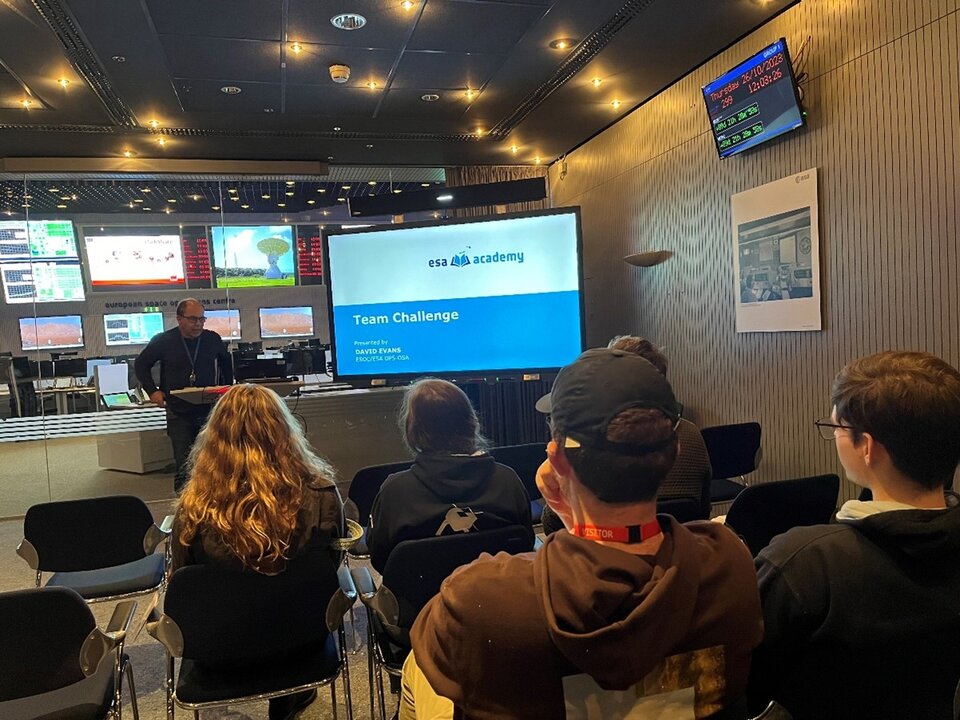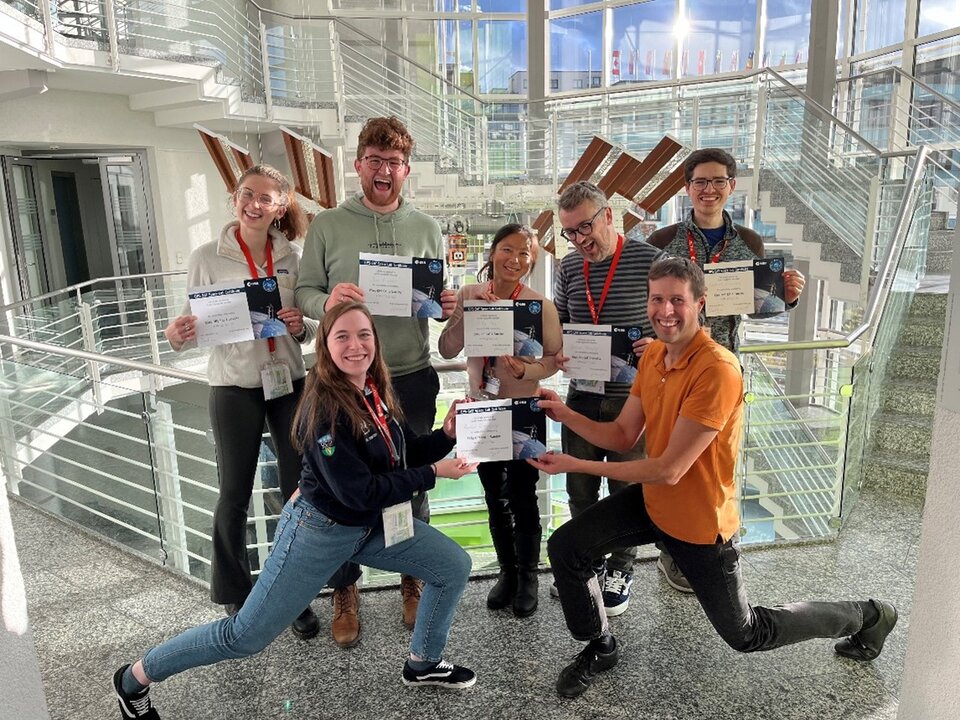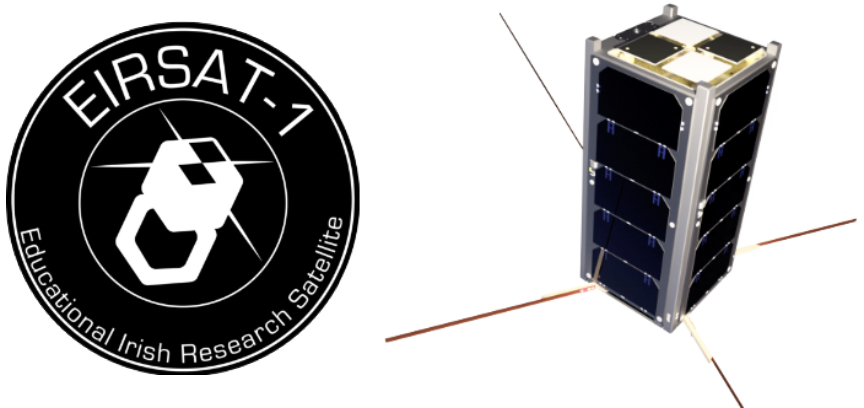
EIRSAT-1 is Ireland’s first satellite is designed and built by students from University College Dublin who are participating in ESA Academy’s Fly Your Satellite! program.

Scheduled for launch in November of 2023, once EIRSAT-1 is in space the student team will act as Spacecraft Operators, ensuring the satellite is safe, performing within parameters, and on track to complete its objectives.
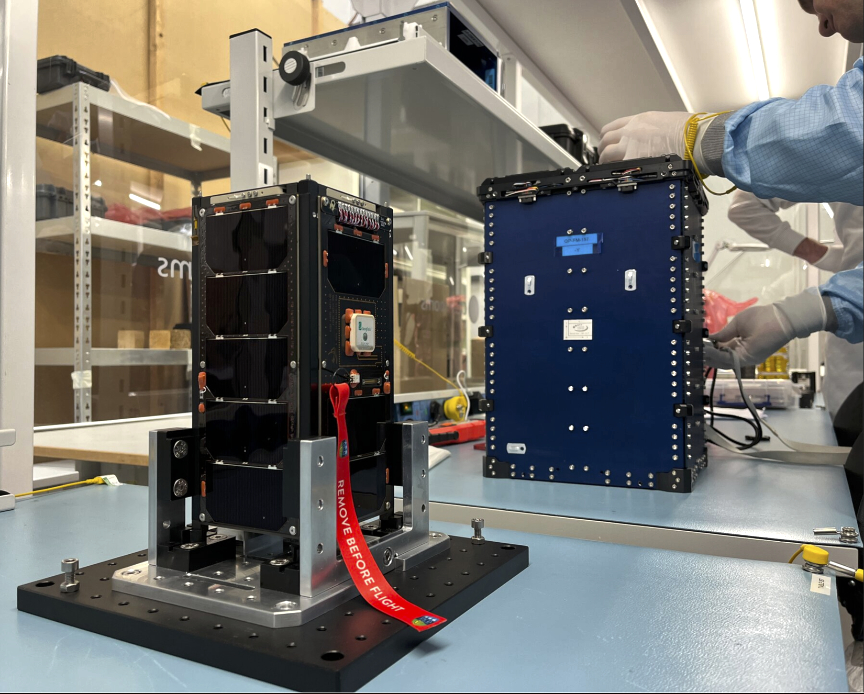
They will also have responsibility for diagnosing and resolving any issues that may arise during the mission.
To train as Spacecraft Operators, the EIRSAT-1 team visited ESA’s European Space Operations Centre (ESOC—photo below) from October 23rd through the 27th, 2023. ESOC is the main mission control center for ESA, located in Darmstadt, Germany.

The students were embedded within the OPS-SAT team, an ESA 3-unit CubeSat that tests new techniques in mission control and onboard satellite systems.
“Visiting the OPS-SAT team at ESOC was a unique opportunity to get to see inside the day to day operations of a real satellite. With the Launch of EIRSAT-1 approaching, learning from the OPS-SAT team’s real world experience and comparing their setup to ours has given me more confidence that we are ready for space,” one of the students commented. “The OPS-SAT team and all the staff at ESOC were so welcoming and really helped me to get my head around some of the more complex aspects of operations, answering all of my many questions. I think the highlight of the experience for me was getting to command OPS-SAT (on my birthday!), which was my first time sending a command to a real satellite in orbit,” he concluded.
The EIRSAT-1 students had an intense but valuable week with the OPS-SAT team, learning directly from these experienced operators and seeing first-hand what day-to-day duties entail. Highlights included:
- Experiencing live satellite passes, and planning actions if the unexpected should occur.
- Gaining skills in satellite scheduling, software patching, data analysis, and automation.
- Performing group exercises based on real life OPS-SAT scenarios.
- Sending real-time commands to OPS-SAT, such as switching the camera on and off; capturing multiple pictures; creating folders; and managing files.
- Learning about the SMILE antennas, and gaining inspiration for their own ground stations.
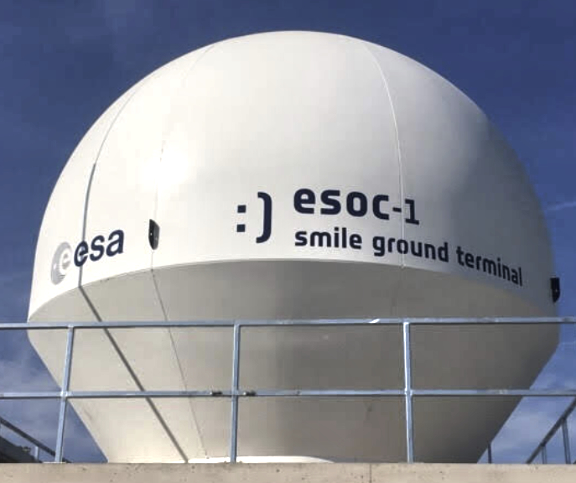
The students also spent a full day engaged in simulations within ESA’s main control room, designed to test their capabilities in a realistic time-pressure situation.
“The experience I gained at ESOC was incredibly beneficial and enjoyable. We were so fortunate to have been given the opportunity to view the facility and to see where many of the ESA missions began and continue to be operated from, but the highlight of this experience had to be in spending time and working with the OPS-SAT team,” another student said.
Each student was assigned a specific role, such as Spacecraft Operation Manager, Power, and Data Handling. A scenario was then presented: a spacecraft anomaly had been detected and the students must collaborate quickly and efficiently to identify potential issues and plan the best course of action during the next satellite pass. The students performed admirably!
Over the course of the week the EIRSAT-1 team acquired valuable knowledge and a deeper understanding of potential challenges and operational pitfalls to be avoided. They are now equipped with the necessary tools and knowledge to prepare for the unknown, where critical decisions can mean the difference between losing their satellite or successful completion of a mission. The team will not have to wait long before putting their new skills to the test!
“Observing the unique inner workings of another satellite team was extremely beneficial and refreshing to us. Seeing the different approaches and problem solving that the team adopts and troubleshooting problems that we have had in the past with this experienced team has left us so much better prepared and educated going forward with the launch of our own satellite,” the student concluded.
Article is courtesy of ESA.

